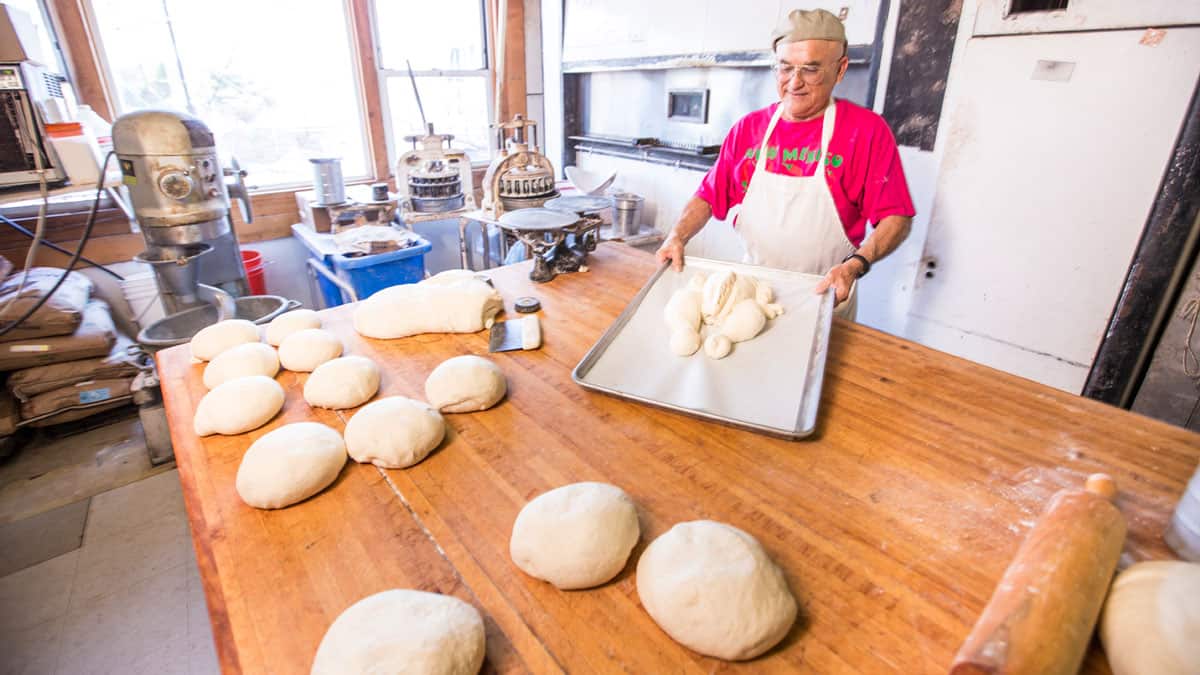How to Start a Bakery
Want to turn your love of baking into a business? It will take more than a pastry bag and a dream. Here are 7 steps to start a bakery.

Want to turn your love of baking into a successful business? It’s going to take a lot more than a pastry bag and a dream to start a bakery. Here are the seven steps to turn your passion into a reality.
Step 1: Select a Bakery Type
What kind of bakery do you want to run? There are a lot of potential ways to start a bakery business. Some options to consider:
- Wholesale Bakery: Do you want to sell your products to existing establishments, like coffee shops and restaurants? Many businesses will start out as wholesale, and then once they’ve established a following, open their own shop. If you go the wholesale route, you’ll have to decide if you want to work out of your home kitchen (check laws in your state to make sure you’re compliant), a kitchen incubator, or try to work out an arrangement with a restaurant to use their kitchen during their off-hours.
- Retail Bakery: If you want to open your own bake shop, think about how you want the store to operate. Counter-only? Sit-down? Food truck? Each option comes with its own rules and regulations, so research thoroughly before you make a decision.
- Online Bakery: If you want to sell baked goods online, you’ll have to consider where to do your baking just like you would for the wholesale option.
Step 2: Test Your Recipes
If you’re going to be doing all of the baking, your next step is to test and perfect your recipes. Friends and family are a great place to start, but eventually you’ll want some more objective feedback. Farmer’s markets and small grocery stores are a great place to give out samples and solicit reviews. If you’re planning on offering additional items you won’t be making yourself, now is the time to source them.
Step 3: Calculate Costs
Once you’ve figured out what baked goods you’re going to sell, you need to figure out how much capital you need to make it happen. You’ll need to know those numbers to create your bakery’s business plan, and also to figure out how much money you’ll need to bring in to cover those costs. Consider all of the following:
- Recipes: For any items that you’ll be making, cost them out on a per-item basis. It’s important to know how much each cupcake costs to make so you can figure out what to sell them for.
- Supplies: Cost out any additional items you intend to buy on a regular basis, such as napkins and utensils, bake boxes and other packaging and serving supplies, and even cleaning supplies for the kitchen and retail space.
- Equipment: Calculate costs for any equipment you may need to purchase. You may luck out and find a commercial kitchen space stocked with a number of the items you’ve factored in, but you shouldn’t count on it.
Step 4: Write a Bakery Business Plan
If you plan on seeking funding for your bakery, you’ll definitely need to have a business plan to give to potential lenders. But what if you’ve got the startup money saved, or have already secured investors? Write a business plan for your bakery anyway. It will help you to become more focused on growing a viable business.
Here are the basic elements that a bakery business plan should include:
- Executive Summary: An overview of your bakery’s goals.
- Business Description: An explanation of your company and industry, along with the current outlook and forecasts.
- Organization and Management: An explanation of how your company will be structured. How many employees will you need? Who will be in charge of what? Even if the company will just be you for the foreseeable future, it’s a good idea to think about when you might need to bring additional team members on board.
- Products and Services: This is where you explain your concept, including what you’re selling, what vendors and suppliers you’ll use, what your anticipated costs are, and what makes your business unique.
- Market Analysis and Strategies: An explanation of who your competitors are, how you differ from them, and what kind of market share you reasonably expect to take.
- Sales and Marketing: An overview of how you plan to market and grow your business.
- Funding Request: If you’re creating a business plan in order to secure funding for your bakery, this is where you ask for how much money you need right now, explain what you’re going to spend it on, and when you anticipate needing another round of financing.
- Financial Plan: Even if you aren’t looking for funding, completing this section is a good exercise. List out your sales projections, costs, and how you plan to allocate resources. This will give you a good idea of whether or not you can actually make money.
Step 5: Secure Funding
If you’re just starting out in business, a bank loan may be out of your reach. Traditional banks deal mainly in large sums. If you’re starting a bakery, you likely won’t need that much cash. Here are some alternative lending options for new businesses:
- Microloans: Usually smaller than a traditional bank loan, microloans can be a great option for a business just starting out.
- Investors: If you’re willing to take on a partner or partners and give up some of your business equity, investors may be an option.
- Savings: If you can scrimp and save enough to get your business off the ground, you can avoid having to ask for money or pay interest. This isn’t possible for everyone, obviously, but it is ideal.
- Crowdfunding: There are tons of websites out there for drumming up money for your business, and lots of people who donate money on those sites. If you decide to go the crowdfunding route, make sure you read the fine print so you understand fees and penalties for not reaching your funding goal.
- Friends and family: More forgiving than a bank and with usually with much less interest involved, loans from friends and family can give you the boost you need to meet your funding goals. If you do borrow money from friends and family, it’s a good idea to document the payment terms, just to make sure everyone is on the same page.
- Credit cards: This is a risky option for financing your business, but if you have a plan in place for making required payments, you can keep your credit in good standing and keep your business afloat.
Step 6: Choose a Commercial Space
Whether you’re looking for a commercial kitchen to bake in or a full-scale baking and retail operation, finding the right space can be a long and arduous process. Know what you want in a neighborhood and space, and look at a lot of different kitchens before you make a decision.
As you get deeper into your search, depending on economic factors and your preferences, you might decide whether you want to buy or rent a commercial space. Consider foot traffic, accessibility, and nearby businesses that could complement or compete with yours. Most importantly, make sure any location you consider meets all safety requirements, which vary from state to state.
Step 7: Market Your Bakery
If you created a business plan, you likely spelled out your overall marketing strategy. Now it’s time to put that plan into action! Make it clear from the outside of your bakery that you’re having a grand opening, and get the word out through social media, flyers, and local media. Keep the momentum going by promoting your business both online and off.
Getting to wake up every morning and do what you love may not seem like a lot of work, but turning a baking hobby into a viable business will take a lot of skills beyond the kitchen. Don’t be afraid to ask for help when you need it, and remember that you’re going to be learning a lot about running a small business on the job, and that’s okay.





